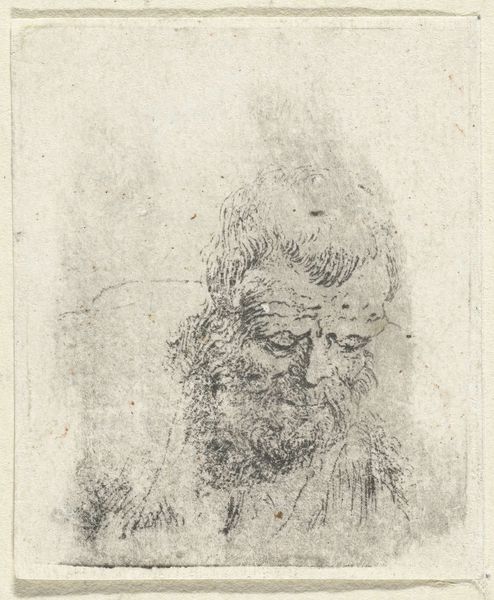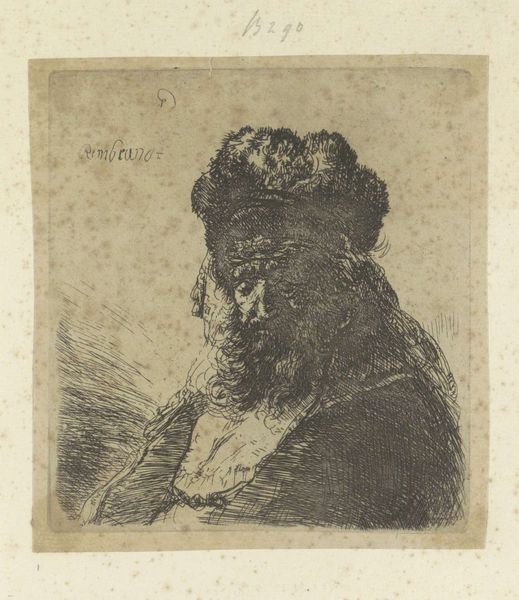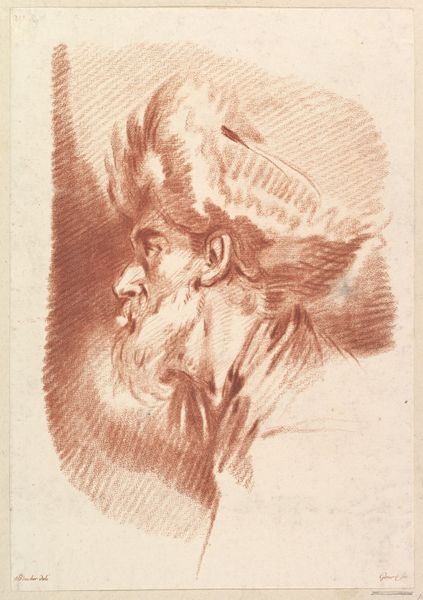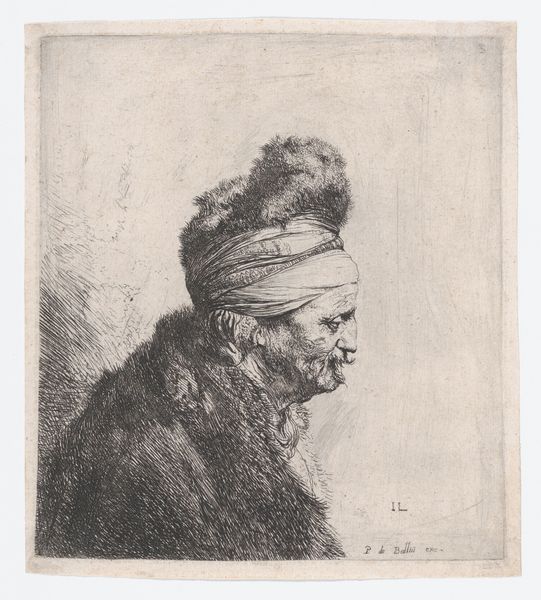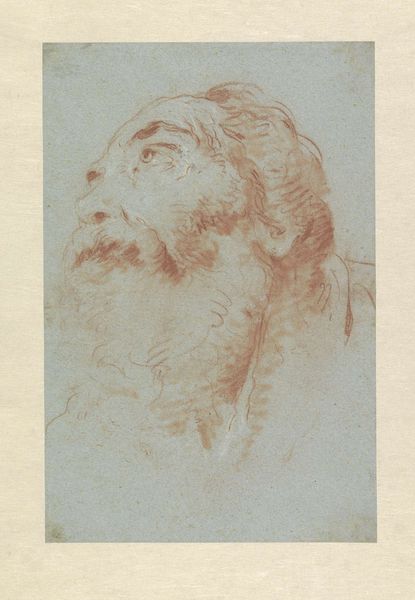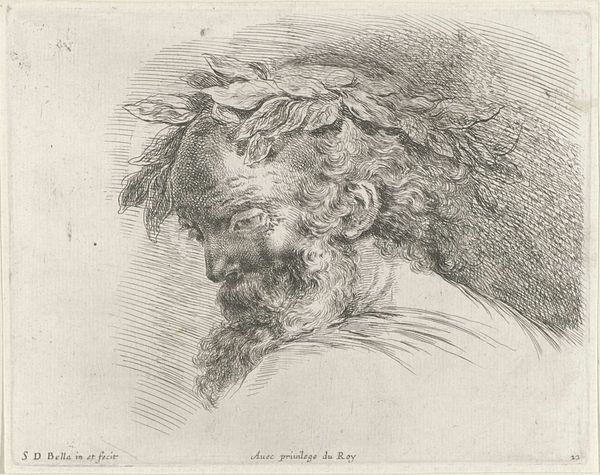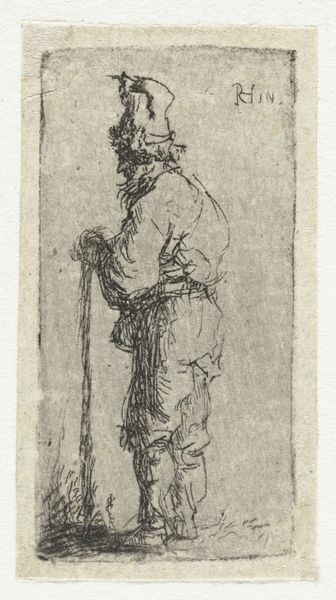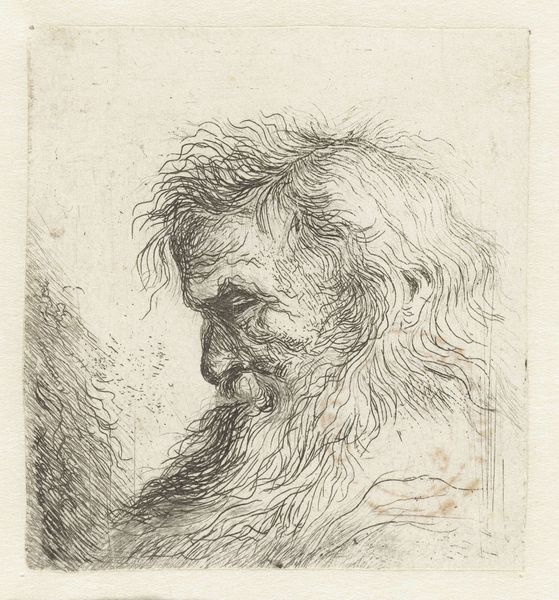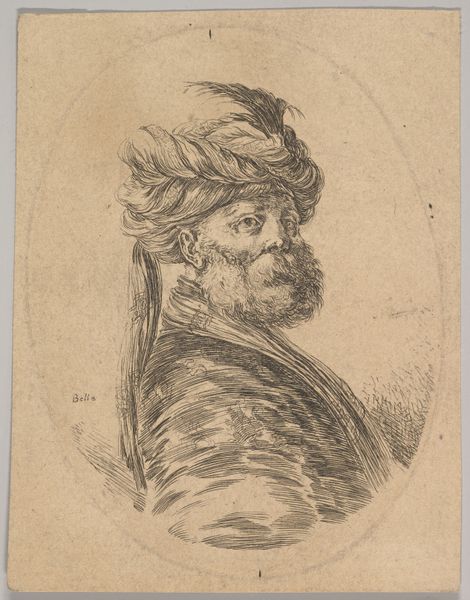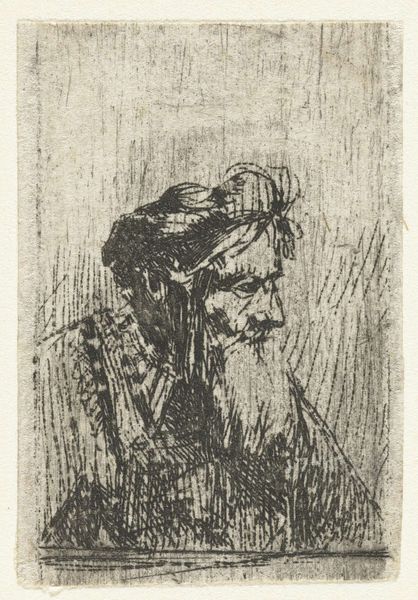
drawing, etching
#
portrait
#
drawing
#
baroque
#
etching
#
etching
#
realism
#
monochrome
Dimensions: height 52 mm, width 43 mm
Copyright: Rijks Museum: Open Domain
Editor: Here we have Dirck de Bray’s etching, "Head of an Old Bearded Man", dating from somewhere between 1645 and 1694. I'm immediately drawn to the intricate details in the beard – it looks almost tactile. What’s your perspective on this work? Curator: What grabs my attention is the *how* and the *why* behind creating something like this. Etching, in its nature, is an iterative process. De Bray and his contemporaries are operating within a very particular market, reproducing imagery with certain types of labor to facilitate specific channels of consumption. We often consider painting or sculpture 'high art', but these etchings demonstrate that 'high art' practices would sometimes leverage printmaking traditions to circulate ideas in a capitalist system. What do you think that suggests? Editor: That's fascinating, I hadn't considered it in that light! So the decision to use etching was less about artistic expression and more about…accessibility? Curator: It's both, really! Artistic expression takes on new character as an artisan begins to also grapple with commercial distribution and mass manufacture. De Bray also came from an artistic family, and in Haarlem artists tended to pass down artistic skills and their workshops through families. We could assume De Bray made this for his family's shop? How does that inform the meaning of the art itself? Editor: I guess thinking about it, there would be different expectations and pressures to perform both artistic creation and the practical craft required to make a living. I am now looking at this from a totally different viewpoint! Curator: Exactly! Considering these things makes us reconsider the usual classifications, right? Suddenly "fine art" and "craft" blur a bit when we realize how the materials, labor, and intended audience shaped its very existence. Editor: This really highlights the importance of looking beyond just the aesthetic qualities of a work and understanding the means through which it came into being and how they complicate aesthetic experience!
Comments
No comments
Be the first to comment and join the conversation on the ultimate creative platform.
